Top 5 Film Locations in France
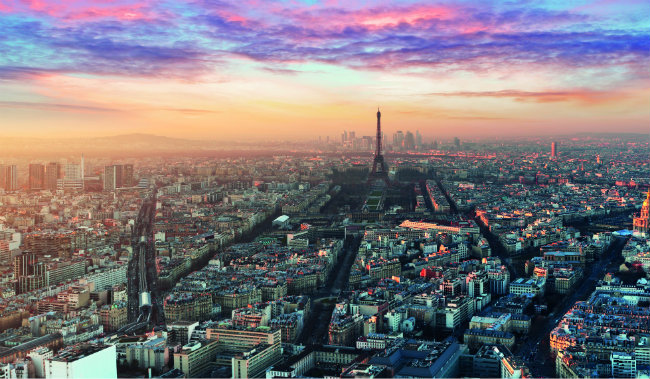
Home to some of the most iconic scenery, sites and monuments in the world, it’s little wonder that France has inspired cinematographers for decades.
Paris: A network of notable spots
A city that needs no introduction, Paris has been the setting for numerous cinema classics. It is known as the ‘City of Love’ – and it has certainly stolen the hearts of filmmakers to become immortalised on the silver screen.
It was practically a character in its own right in Jean-Pierre Jeunet’s critically-acclaimed Amélie, starring Audrey Tautou. The charming story of Amélie Poulain, a young waitress searching for some meaning to her life, weaves through the capital’s streets, stairways and shops. Le Café des 2 Moulins, a real bistro in Montmartre, is the kind-hearted heroine’s workplace. It boomed in popularity after the film’s success. Fans can dine surrounded by the distinctive red and gold décor, while a film poster reminds them exactly where they are, Tautou’s twinkling eyes surveying her legacy.
Another well-loved title, La Vie en Rose, briefly dips into Julien, an Art Nouveau brasserie in the 10th arrondissement. This intricate eatery was a favourite of national treasure Édith Piaf in real life, so naturally it featured in the movie adaptation starring Marion Cotillard.
On the topic of bistros, the 1930s La Renaissance in the 18th arrondissement was handpicked by Quentin Tarantino to shoot the only scene actually filmed on location in Paris for his gritty alternative war flick Inglourious Basterds. The eatery is where Mélanie Laurent discovers that Daniel Brühl is the hero of a Nazi propaganda film. He chose the Art Deco restaurant after first spotting it in Claude Chabrol’s The Blood of Others. In all, more than ten feature films have been shot there. Topping the list are Claude Zidi’s Ripoux 1 and 2 and Stuntwoman with Jean-Paul Belmondo.
The Grand Véfour, where time has seemingly stood still since the late 19th century, lent itself perfectly as one of the period backdrops for Anne Fontaine’s Coco Before Chanel, starring (again) Audrey Tautou as the fearless fashion icon. Filming in the chic 1st arroundissement café was a no-brainer for the director, not only because of its effortless elegance and flurry of original features – it was a beloved haunt of Mademoiselle Chanel too. From Bonaparte to Victor Hugo, it was frequented by a host of historical figures, literary paragons and coteries of artists.
The luxurious Hotel Regina, also in the coveted 1st arrondissement, has certainly caught the discerning eye of high-profile filmmakers over the decades. It has featured most notably in Stephen Frears’s Chéri, Luc Besson’s Nikita, and Doug Liman’s The Bourne Identity, fronted by Hollywood superstar Matt Damon.
Last but not least, Midnight in Paris was set chiefly in the titular city. Written and directed by Woody Allen, this tale of an unfulfilled screenwriter following his dream is a sweetly nostalgic watch, flitting from present day to the Roaring Twenties. It graces such venues as Paul on the Place Dauphine, Le Bristol, Le Musée Rodin and Saint-Étienne-du-Mont church.
In short, Paris is a film lover’s paradise. So hop to it and step into the (big) shoes of the silver screen’s greats.
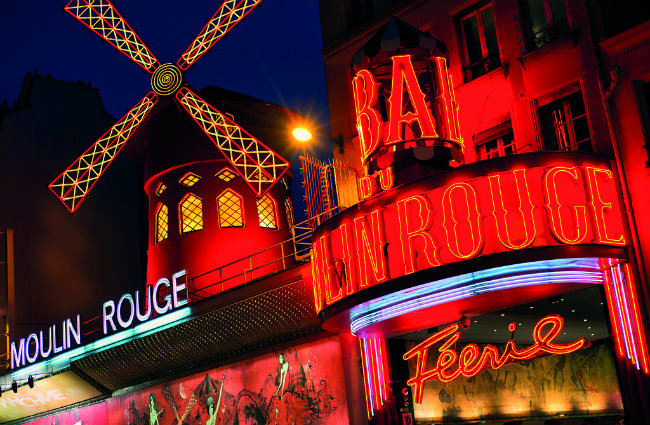
The legendary Moulin Rouge. Photo: Shadowgate- CC BY-SA 2.0, Wikimedia
PARIS INSIDER
Deyrolle: This eccentric taxidermy shop has the air of a dream (or nightmare), packed with an impressive menagerie of animals. It inspired the wedding reception scene in Midnight in Paris. Website: www.deyrolle.com
Kong: A trendy Japanese restaurant that looks like a cross between a bistro and a greenhouse, Kong is a striking locale that featured in Guillaume Canet’s crime thriller Tell No One (2006). Website: www.kong.fr
Le Moulin Rouge: The world-famous cabaret venue and Parisian landmark was recreated for Baz Luhrmann’s Moulin Rouge! (2001), featuring Nicole Kidman and Ewan McGregor. Website: www.moulinrouge.fr
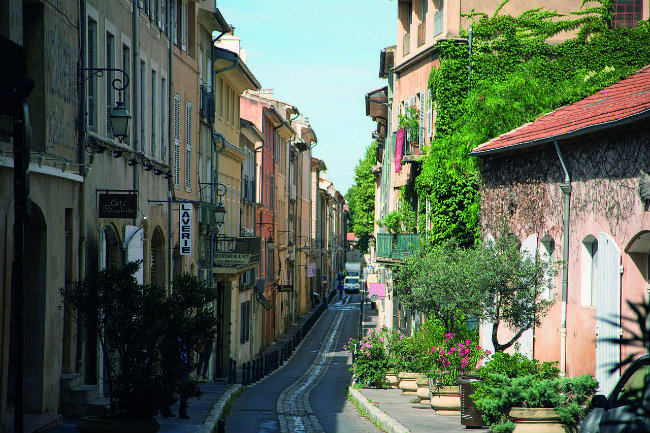
A street in Aix-en-Provence. Photo: Victor Grigas- CC-BY-SA 4.0 Wikimedia
Aix-en-Provence: Enchanteur
Cézanne’s inspiration, this elegant city is almost otherworldly in its beauty, with honey-coloured buildings and limestone mountains. As well as providing fuel for the painter’s imagination, its surrounding areas have also captured the attention of some big names in cinema.
Slightly east, in the Var department, is the small town of Vidauban. This humble setting appeared in none other than Richard Curtis’s hugely popular romantic comedy Love Actually, when one plot thread sees Colin Firth’s character escaping to an idyllic house in the country – in fact a local farmhouse on Chemin du Roucas Troucas.
The French classic …And God Created Woman, which propelled Brigitte Bardot to fame, was also filmed in Provence-Alpes-Côte d’Azur. A bit further afield (but still within Var) is Saint-Tropez, a coastal town put firmly on the map by Bardot’s sensual performance as Juliette Hardy.
While Aix-en-Provence is perhaps best known as Cézanne’s birthplace and subject, it’s ideally situated for a tour of film locations in the region and a captivating place to visit in its own right. Website: www.aixenprovencetourism.com
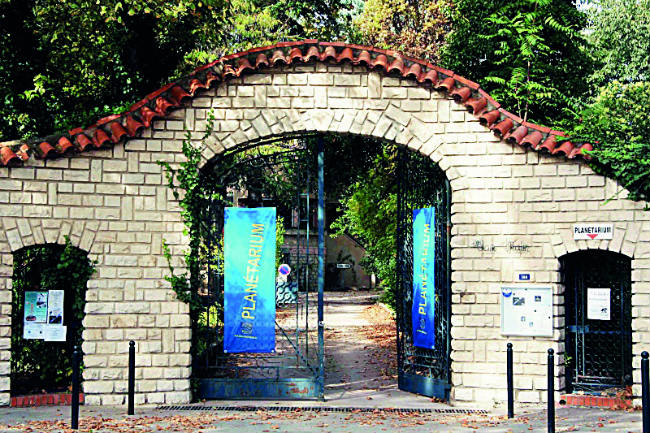
Planétarium Peiresc
AIX-EN-PROVENCE INSIDER
Planétarium Peiresc: Starry-eyed wonders await you at this dedicated planetarium, found near Parc Saint-Mitre. Tickets cost €4 for children and €6 for adults. Website: www.aix-planetarium.fr
Galerie Wildlife-Art: A modern art gallery featuring the work of painter and sculptor Aurélien Raynaud. Some alarmingly lifelike mesh and wooden animals reside here, alongside an exquisite set of wildlife paintings. Website: www.aurelien-art.com
In the Steps of Cézanne: This two-hour guided walking tour leads visitors around the pioneering artist’s home city, stopping at such meaningful sites as his birthplace and indeed his last home. Website: www.aixenprovencetourism.com
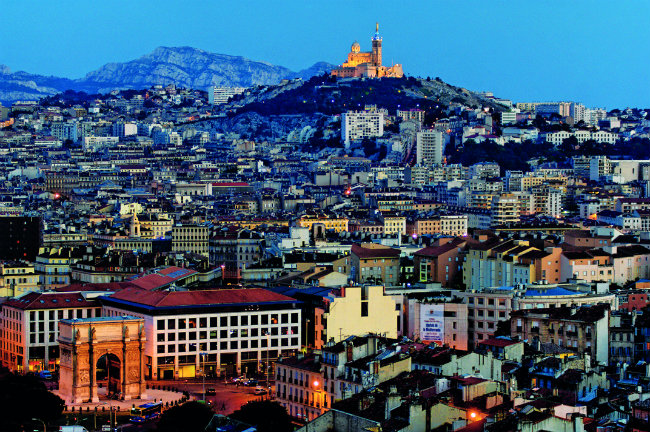
Marseille by night. Photo: F. Laffont-Feraud
Marseille: Ancient and modern
Aix-en-Provence’s neighbour, Marseille, is France’s oldest city, boasting a long, fascinating history throughout which its port has played a crucial role. While the current marina thrives, the Old Port has undergone a metamorphosis into a hub for retail activity – one of the city’s many changes as it continues to revitalise its economy. It’s not all shopping and dining, though: it’s also seen its fair share of movie appearances.
In 1971, viewers were transported to a gritty Marseille in The French Connection, complete with a drug-smuggling syndicate and gun-toting detective. This was, of course, a dramatisation of a very real scheme that lasted from the 1930s right through to the ’70s, as criminals monopolised Marseille’s port to ship heroin to the US.
However, perhaps the city’s best-known role was in Taxi, Luc Besson’s ludicrously fun action-comedy flick. Pizza delivery boy Daniel (Samy Naceri) races through Marseille’s streets with reckless abandon, bringing the real hustle and bustle of city life to the big screen – with a little added drama. Website: www.marseille-tourisme.com
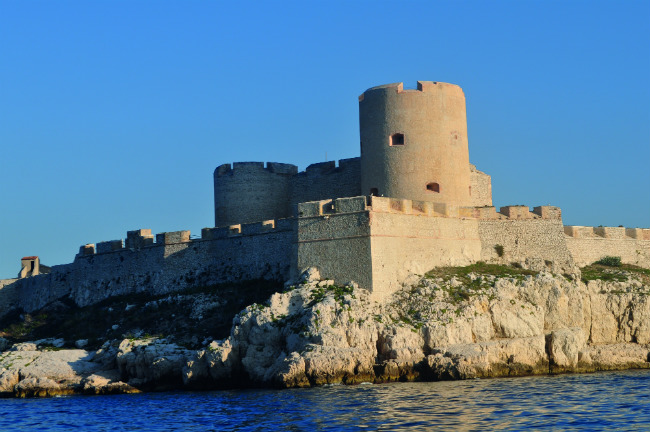
Château d’If. Photo: F. Laffont-Feraud.
MARSEILLE INSIDER
Notre-Dame de la Garde: It would be remiss to visit this historic city and not see its best-known landmark. This imposing basilica overlooks Marseille and is worth the uphill climb for the view alone. Website: www.notredamedelagarde.com
Château d’If: Standing on If Island off the coast of Marseille, this fortress and former prison is one of the settings in Alexandre Dumas’s novel The Count of Monte Cristo. It’s now open to the public and accessible by ferry. Website: www.chateau-if.fr
Marseille History Museum: For a more complete overview, make sure to stop by at this comprehensive historical and archaeological musée. Website
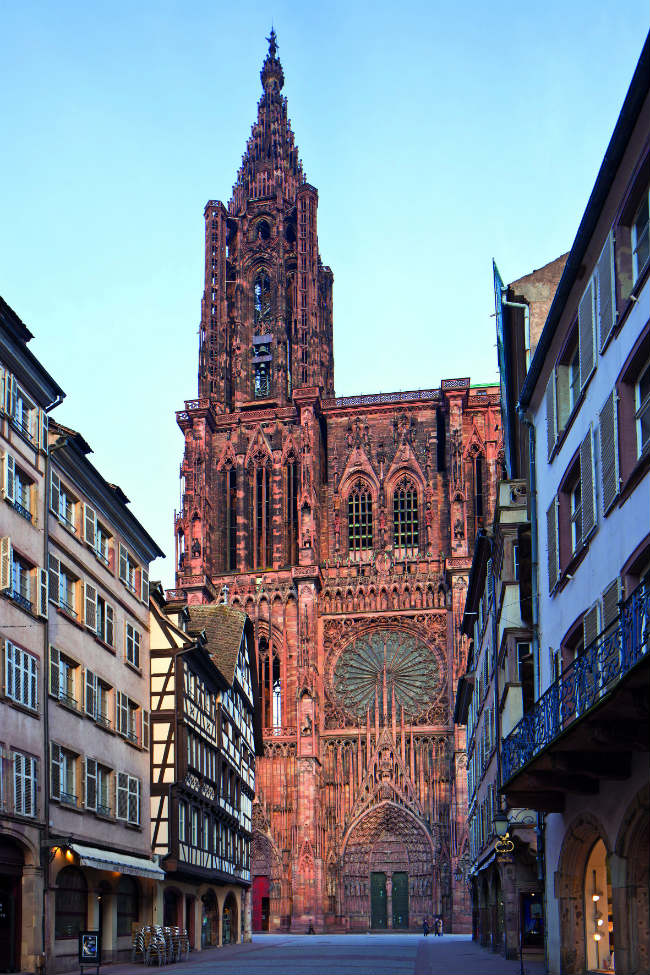
Strasbourg. Photo: Christophe Hamm/ Strasbourg Tourist Office
Strasbourg: Cultural diver-city
Part European parliamentary base, part idyllic old town, Strasbourg is a fusion of two very disparate worlds. As well as its political status, it possesses a strong offering of universities at the forefront of science, medicine and arts, plus several museums and music institutions. Last year, it even won the coveted ‘smart-city’ award at the EU-China Smart Mobility City Awards, reflecting its positive approach to green mobility. In short, Strasbourg is a mixed bag full of treats.
It was a prominent backdrop in Guy Ritchie’s Sherlock Holmes: A Game of Shadows, albeit briefly, when an anarchist’s bomb explodes outside the Place de la Cathédrale. It’s hardly any surprise that the film’s crime-solving plot gravitated towards such a political axis, and the cathedral, with its majestic stature and detailed gothic architecture, was an obvious focal point.
Along different lines, the city was also used in Julia, starring Vanessa Redgrave as the ill-fated eponymous character and Jane Fonda as her friend Lillian. The story revisits the Nazi period and Strasbourg’s proximity to Germany made it a logical set choice. Website: www.otstrasbourg.fr
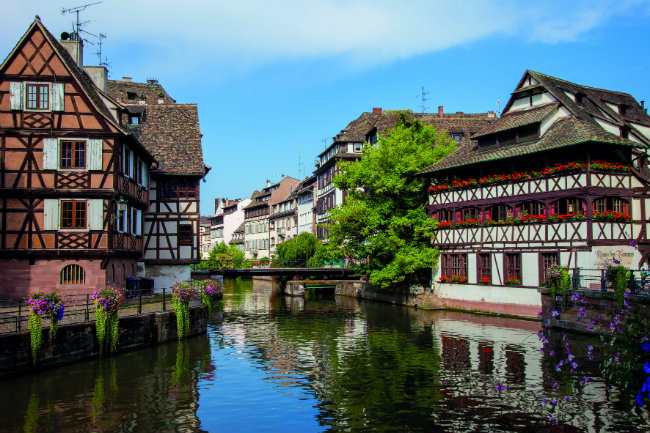
Petite France in Strasbourg. Photo: Philippe Rexel/ Strasbourg Tourist Office
Strasbourg Insider
Museum of Modern Art: The Musée d’Art Moderne et Contemporain de Strasbourg houses all manners of contemporary art, often including actual art productions. Website: www.strasbourg.info/museums
Petite France: Popping with colour, this charming neighbourhood is at the beating heart of Strasbourg’s labyrinthine canals. Brightly-painted homes with floral fronts line the waterways, along with cute cafés and hotels.
Grande Île: An island in the Alsatian capital’s centre, Grande Île is a UNESCO World Heritage Site. You can find a number of charismatic monuments here, including the city’s remarkable cathedral, four ancient churches and the Palais Rohan.
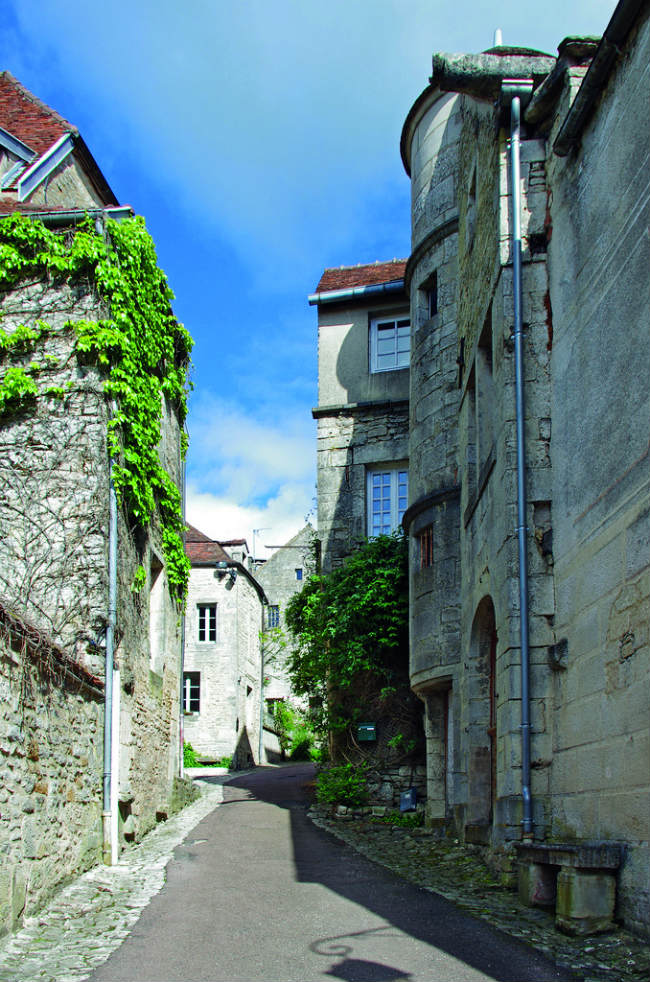
The picturesque town of Flavigny-sur-Ozerain. Photo: Daniel Jolivet
Flavigny: Chocolate-box town
Okay, we know it’s not a city, but we couldn’t pass up the opportunity to discuss one of cinema’s loveliest set locations. Based on the novel by the same name, Chocolat epitomises the French chocolate-box lifestyle – quite literally.
The romantic drama centres on a nomadic chocolatier named Vianne (Juliette Binoche) as she and her daughter set up shop in a quaint little town during Lent, much to the Mayor’s displeasure. In fact, most of Vianne’s decisions flout tradition, from her fashion to her involvement with a gypsy passing through the area (Johnny Depp).
Located in Côte-d’Or, Burgundy, Flavigny-sur-Ozerain is a picturesque network of old streets surrounded by countryside. It dates back to the Viking era, when its abbey supposedly served as a hideout for precious local relics during invasions. Today, the former Benedictine monastery serves as a Dominican place of worship.
Brimming with cobbled courtyards, ivy-coated walls and tightly winding allées, Flavigny is a deserving owner of its Les Plus Beaux Villages de France status. Website: www.burgundy-tourism.com
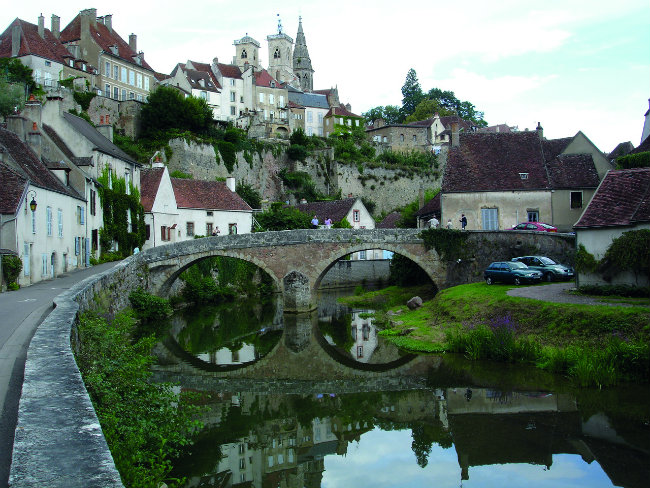
Pont Pinard in Semur-en-Auxois.
FLAVIGNY INSIDER
Anise of Flavigny: Like most chocoholics, we wish Chocolat’s starring shop was real. It’s not, but there is a foundation of truth in its choice of geography: Flavigny is actually home to a famous sweet! Flavoured with aniseed and sugar syrup, these hard candies have been produced since 1591. They’ve snowballed in popularity and are now exported all across the world. Read our feature story here. Website: www.anis-flavigny.com
Semur-en-Auxois: A nearby medieval town built upon a rocky granite outcrop, it’s worth visiting in a round trip of the area. Every August it hosts the ‘Musicales en Auxois’, a festival celebrating baroque music, including pieces by Purcell, Handel and Bach. Musicians perform a repertoire of traditional songs, choral works and polyphonic pieces. Website: www.tourisme-semur.fr
From France Today magazine
Share to: Facebook Twitter LinkedIn Email
Leave a reply
Your email address will not be published. Required fields are marked *


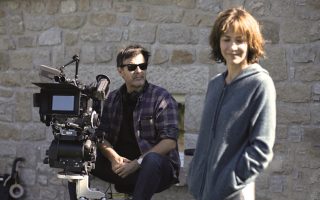

REPLY
REPLY
REPLY